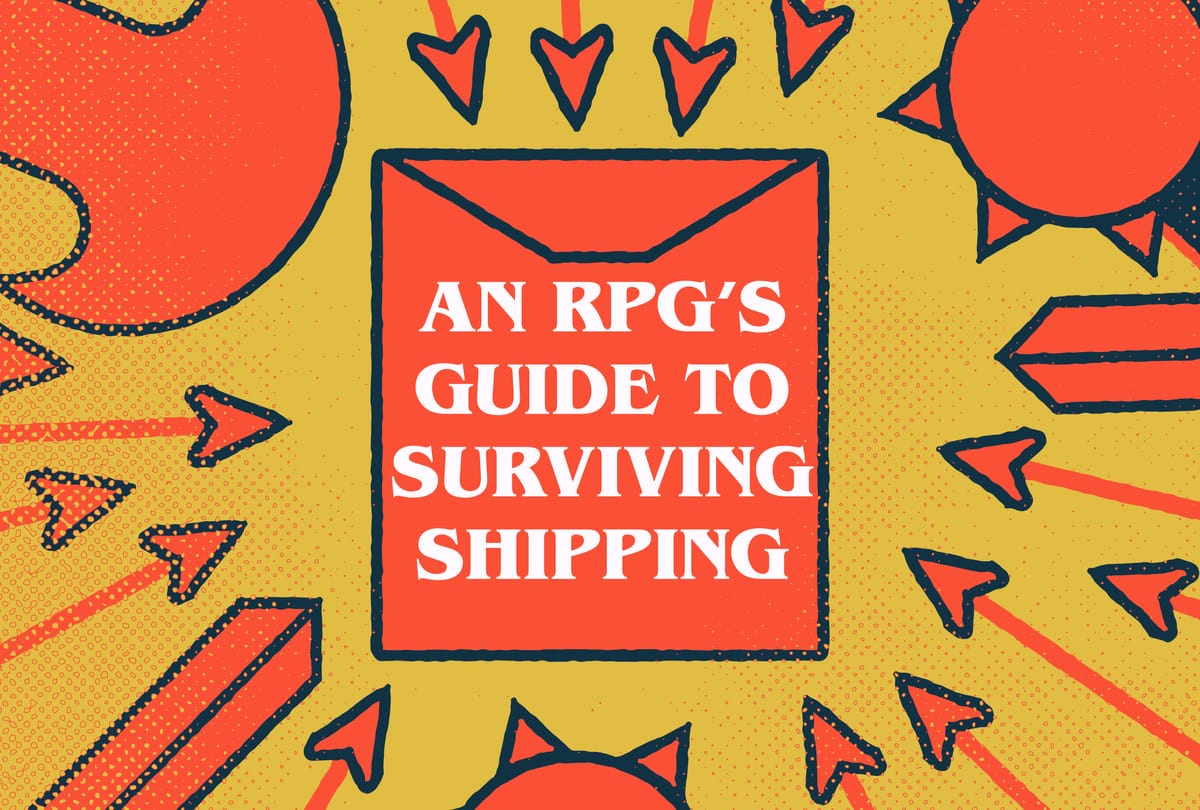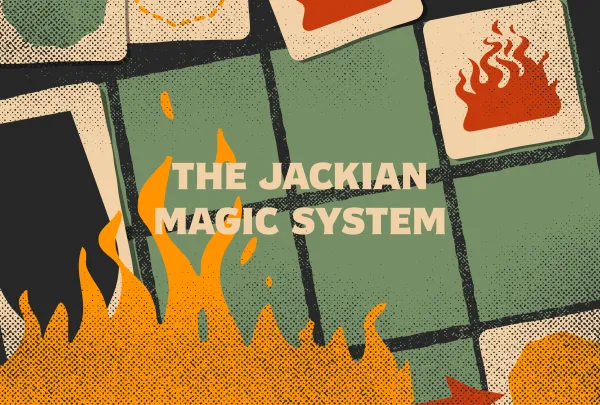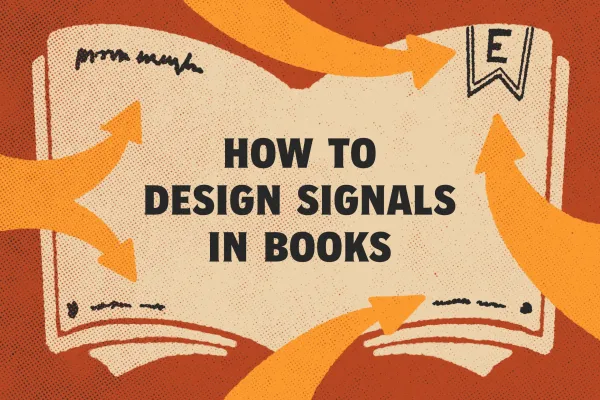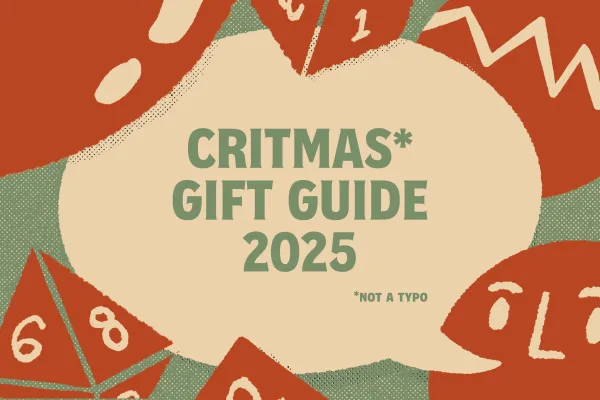An RPG's Guide to Surviving Shipping
Which rpgs survive the journey to my house? It depends on the packaging.

A memorial to all the fallen books.
I knew judging for the ENnies meant receiving a horde of books and zines. Over 300 to be precise. What I hadn't considered was how much bubblewrap, cardboard, and packing peanuts would come with them on their perilous journey to Maine in Winter.
First, some good news: the books are fine. A little uglier in some cases, but otherwise "new" with a scuff or two courtesy of UPS, FedEx, and US Customs. The bad news: A lot of books survived by rolling the dice—one shipment arrived wearing its mailer like a vest. Ask me in a year or two which companies send their books out like lambs to the slaughter (it's not what you expect).
Anyway, after receiving over 300 rpgs in one of the more remote, least populous, most bad-weather prone states in the US, I think it's time to share my findings.
- A guide to shipping your books affordably as a creator
- An official statement on behalf of the ENNIE Awards
- The final word on shipping. (It varies from place to place.)
This is an article about making the books survive the journey.
The 3 things threatening rpg safety.
- Physical damage. Scrapes from inside the truck, falling damage, getting crushed under an exercise bike, and an angry FedEx worker dropkicking your stuff onto the stoop. Hell, sometimes the trauma is just a thousand hugs and scratches on its journey through the midwest.
- Water damage. Easier to predict but harder to mitigate. Water damage can come from rain, sleet, and snow. Or just plain old humidity like the hot kind found in the American South or the cold kind in the UK.
- The books themselves. Turns out, if you put two heavy books in a big, empty box, they'll fight all the way to your customer's doorstep. God help us if you shipped metal dice, too, you might as well have dropped a gun in there.
The 3 layers of protection for shipping.
The thing your game comes in is called the primary packaging. In our business, that's usually nothing at all. Outside of rpgs, that's the computer box, the bag full of spices, or a bottle of medicine.
Let's walkthrough the three layers working from the inside out:
The waterproof layer.
If you only have one vapor barrier, put it directly around the product. Not the outside of the shipping container. It only takes one scratch, puncture, or crumpled seam for water to leak in. Assume that your outermost layer will be compromised.
Your best three options for stopping water damage are:
- Shrink wrap. This is the most common solution with big offset prints. If you can get a good deal from your manufacturer to apply it at the factory, do it. The only problem is that there's a small chance the wrap will be compromised at the factory. Always doublecheck the shrink before sending it to the customer.
- Plastic bags. Sometimes called poly bags, poly mailers, or slips. These things are awesome. Get the bigger ones that fit A4 or US Letter. You can always put small zines in them and fold and tape the excess for added layers. Every book and zine that came shipped in a poly bag arrived in my kitchen dry.
- Stretch wrap. It's like saran wrap for industrial applications. This is a great option if you're shipping something that's weirdly shaped or needs to be buddy-buddy with other products. You have to be liberal with the stuff. Pretend your resin mini or small pile of books are like a mummy.
The crush layer.
Half of the damage in this year's entries were from not filling the empty space between the product and the packaging. Before I share my favorite examples of good crush, a few notes.
Tip #1: Avoid empty space. This might be counter-intuitive, but empty space is bad. If your game can rattle around, it can bash itself to pieces. This will damage the product and break the other layers of packaging. So, don't go too big with your shipping container. You want 1-3 inches of space on all sides. Any more and you're running the risk of damaging the product from within (or going out of budget).
Tip #2: Make the stuffing durable. Some materials stop working after a few tumbles, either because they've shifted to one side of the box or because they lost their structural integrity. In other words, don't stuff the box with trash bags unless you have enough bags to make it feel like a memory foam pillow.
Tip #3: Isolate the product. In an ideal scenario, you'd suspend your game between cardboard and foam that's perfectly molded to your product so that it never touches the outer shell. That's hard to do (and bad for the environment), so instead, reinforce the book's corners with some cardboard, maybe give them their own box within the box, and then fill any remaining space with materials that apply pressure to the product and the shell.
A few of my favorite options for crush layers this year:
- Cardboard buffers. The big manufacturers had their games wrapped and nested in cardboard cockpits. The indie folks performed just as well by folding cardboard into boxes or triangular tubes and then scaffolding them around their books. It's a costly, maybe overkill measure, but if you have spare cardboard, cardboard tubing, or boxes will do wonders.
- Packing peanuts. Turns out the dumb things work. Especially if you're not stingy with them. Just be careful the product doesn't migrate to one side of the container. You can prevent this by either packing the game in its own smaller box or by adding some other buffers. Note: It turns out a lot of packing peanuts aren't made out of plastic but cornstarch! Try those if you don't expect water.
- Crinkle paper. It looks like cardboard mulch. It has a tendency to cover things in dust, but it works, it looks nice, and it's biodegradable. Just don't use it with a particularly heavy book—it won't keep everything in place. And maybe don't put your clothbound book in there without a plastic slip, either.
- Bubblewrap. This option works really well if you wrap and secure the bubblewrap around the product itself. Don't treat bubble wrap like a bed spread or buffer. It needs to move with the books, so wrap it like its a mummy and make sure there's no empty space for the wrap to shift or slip off.
- Cardboard webbing. This option is growing in popularity and I think the results prove why. So long as it's properly wrapped like bubblewrap, and the games have a waterproof layer, this option pads books well.
- Edge/corner protectors. If you're shipping a boxed set, have some wiggle room in the packaging, or your using a soft outermost layer—these sturdy little cardboard L-shaped bits are your lifeline. You could even craft some makeshift ones.
The outermost layer.
The abuse-friendly shell of your packaging. Some would argue this layer should be impenetrable. I disagree. So long as it keeps everything together, and you're smart about the other layers, you'll get by without dropping a fortune on packaging.
Tip #1: Don't go too big. Avoid making your package a pain in the butt to carry. The bigger the box, the more crush layer you'll need, the more likely it will be dropped, the harder it will be squeezed, and the more likely it will travel under other packages.
Tip #2: Tape is good. If you can spare it, a little extra tape on the seams doesn't hurt anyone. Tape gives boxes flex, a little bit of waterproofing, and as far as I can tell, it has no side effects. So long as the normal tape holds, the extra tape is just that—extra.
Tip #3: Architecture is everything. There are infinite options when it comes to mailers, slips, and boxes. You want the ones where putting weight or friction on the opening doesn't risk opening it. Mailers that become a solid piece of cardboard or plastic when you seal them are good (the ones where the recipient peels a slit out of them, sometimes called rigid mailers or chipboards). Triple wall cardboard boxes with briefcase-like tabs and tops are good as well. Avoid top-load moving boxes (the kind people put in their attics), they're usually too big and their corners fail. If you have no choice but to use them, you'll have to invest in extra crush.
Some of the best options I saw this year from small to big:
- Flat or Chipboard Mailers. I loved getting these because I knew it was going to have a pristine little zine in it. Aim for the self-sealing ones with folding tabs. Don't forget a piece of cardboard and some waterproofing on the inside. I think the reason these worked so well is that they get sorted in with regular mail and magazines.
- Bubble Mailers. Pair this with a waterproof bag on the inside and some folded cardboard, and your zine should arrive at any domestic house damage-free. Just don't stuff the thing. If it starts to look like a pillow, or it sags from weight, move up to a box. Otherwise it won't end up in the basket with the envelopes and end up in the back of the truck with everyone's garden gnomes and dog food. Heavy D&D books love to bust out of these things.
- Literature Mailers. They open like a briefcase and they're usually just a couple inches wider than the books themselves. These are great for a lot of reasons. They're triple wall, physically closed without tape, and not too roomy. But there's another benefit: you can load them neatly from the top. That means you can get the packing job perfect without too much fuss.
This is all too expensive! What do I do?
Like most things, a lot of problems go away when you throw money at it, but if you're smart with materials, you can stretch your budget. First off, utilize a spreadsheet if you can. There is a very slim window where flat-rate boxes from the US Postal Service are budget-friendly. If you go a few ounces over, you'll have to go up a box. If you're a few inches too small, you're wasting money shipping air.
I know I said I wouldn't give advice on saving money—and I'm definitely not getting into equations and price comparisons—but if you're shipping your games, even some cheap armor is better than nothing.
Here's an unordered list of ways to save money:
- Save the bubblewrap and packing peanuts from shipments to you. One time I got my bubblewrap shipped to me in packing peanuts. That was fortuitous.
- Buy the large poly bags instead of the small ones. Sometimes they're cheaper. If. your book is small, you can fold the excess around it and suddenly you have multiple layers of waterproof protection.
- Use free boxes and cardboard found at recycling centers and moving companies for crush layer material. Just make sure it's clean and uncoated. It's okay to be cheap, but if your shipper really messes up, you'll take the blame if the book came packed with a Lucky Charms box and toilet paper.
- Make your books smaller. They tend to get better when you do that, too.
Final tips for surviving the shipping funnel.
This is just a laundry list of observations I made from this year's ENNIE submissions. User results may vary.
- Protect the corners of your books. Especially the hardbacks.
- Embossed cover? Protect them with some kind of covering.
- Be wary of the books rubbing against each other in a bubble mailer.
- "FRAGILE" actually seems to work if you send them through public mail.
- Side-loaded boxes usually had the worst packing jobs of the bunch.
- Styrofoam still sucks. It sucks so much I don't want it even if it works.
- Well-sized slips don't get tossed. I keep my zines in them for storage.
- Again: empty space is your biggest enemy. Spend time and money finding the perfect size, and you'll have better results without paying extra for padding.
- My mail carrier noticed the mailers with drawings of skulls and wizards on them. This made them seem more important to him. Harder to forget.
- The difference between UPS, FedEx, DHL, and USPS is all dependent on the local office and the shipping centers the stuff goes through.
- Certain games get more leeway with damage. The pulpy little book with silly art? Fewer people mind a scuff. The deluxe game with gold foil? Not so much.
- All packaging fails. Sometimes the best solution is a second book.
- You can't satisfy everyone. Sometimes the best solution is a refund.
Edit: Indie Press Revolution has a video all about the packing game. Check it out if you want to know what good packaging looks like. IPR has never sent me damaged goods despite years shopping with them.
Thanks for sharing a link with me, Nicholas!
Until next time!
Explorers Design is a production of Clayton Notestine. If you liked this article, please consider liking, sharing, and subscribing. Members who pay $5/month also get access to additional tools, templates, and inspiration.





